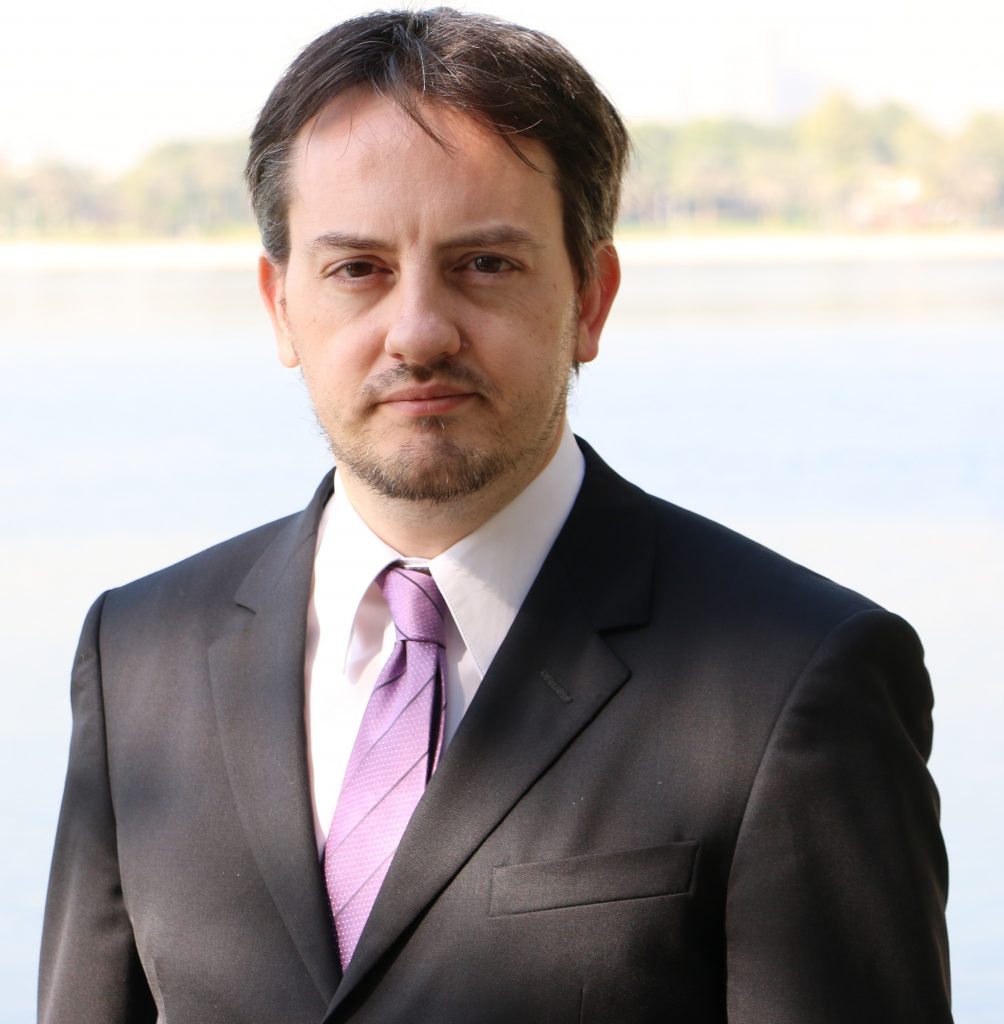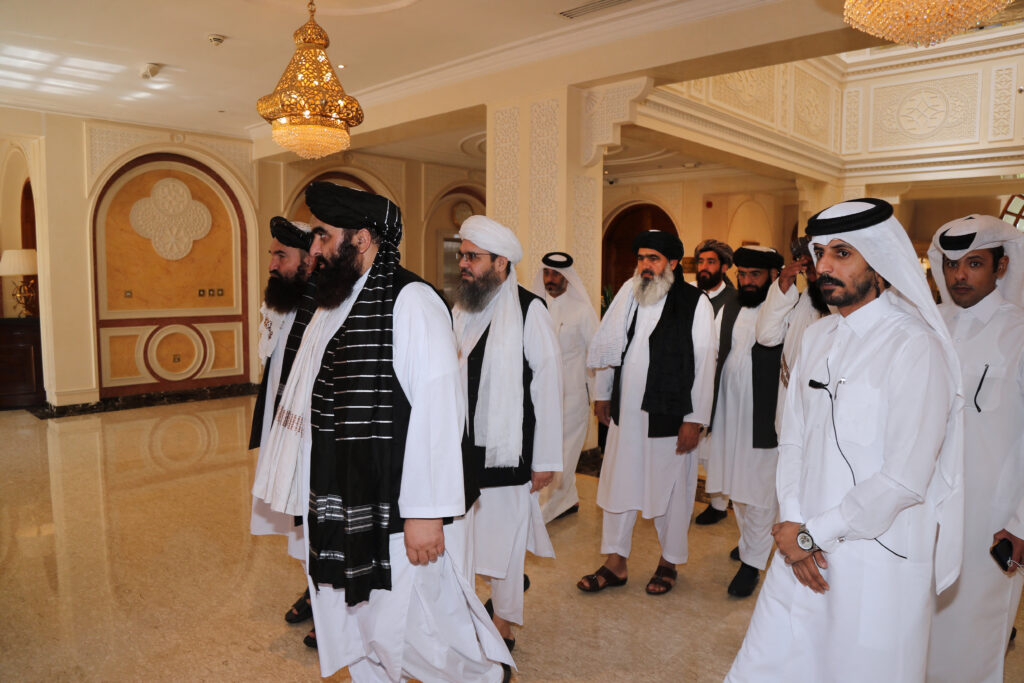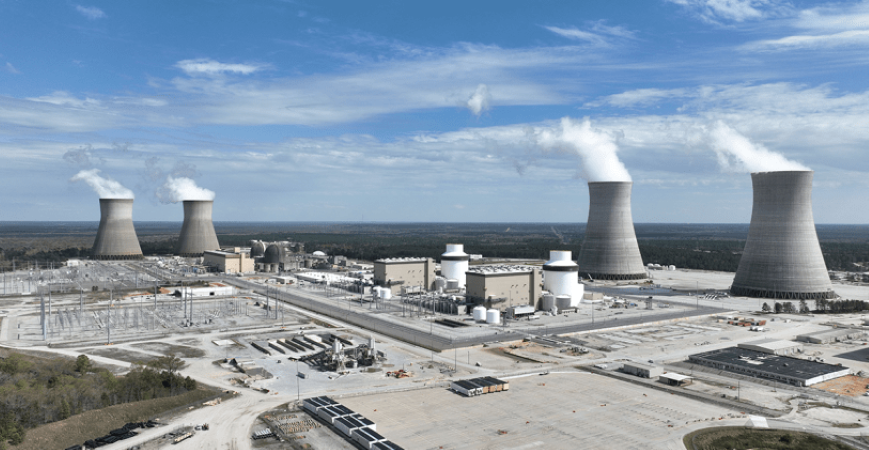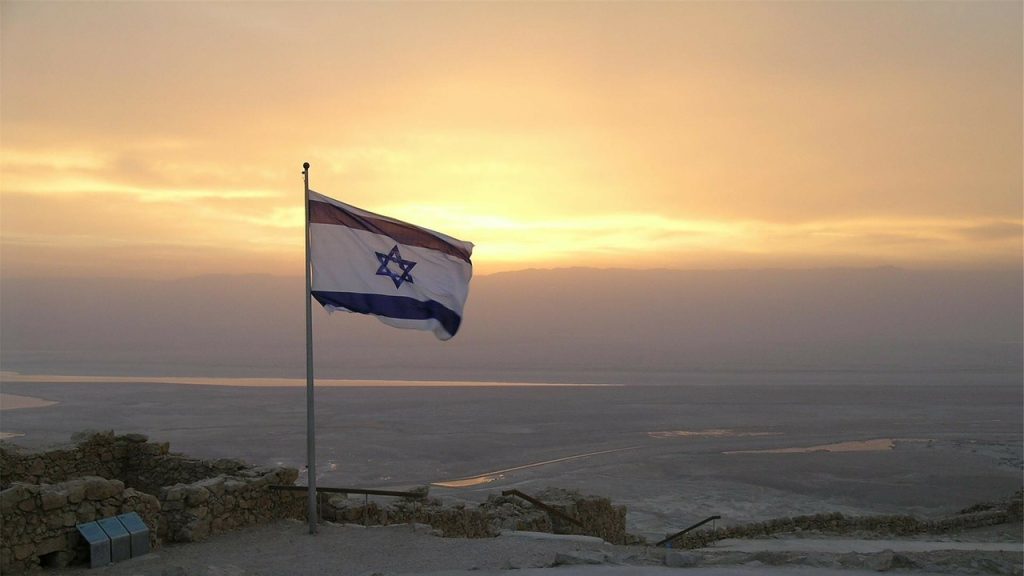
- 04 Nov 2020
Renewable Energy Initiatives in the GCC: Status and Outlook
Abstract
The Middle East Institute organises webinars on relevant and current topics related to the Middle East region and their ramifications for Asia and the world. In this webinar, we will be exploring the Gulf Cooperation Council (GCC) and its initiatives in renewable energy.
Across the Gulf Arab states, the main drivers of this new focus on renewables have not been climate change goals (eg the Paris Agreement) as in the OECD countries. Rather it has been the need to keep up with growing domestic oil and gas demands for electric power grids while also increasing exports, and to free up fuel needed for downstream economic diversification projects such as oil-based petrochemical projects. The countries in the GCC are among the few countries in the world still using oil for power generation during peak demand in the summer months, which is a major loss in economic value as oil is far more valuable as a transport fuel and as feedstock for petrochemicals.
The purpose of the talk would be to assess the progress to date, the extent to which solar power can alleviate local oil and gas demand in the power generating sector (and hence release more oil and gas for exports in the future), the potential for this sector to promote new economic activity in the GCC countries’ diversification efforts and job creation, the potential for Asia-based companies to invest in this sector, among other questions. The UAE nuclear power plant coming on-stream, as part of non-oil and gas development, would also be part of the discussion.
This public talk will be conducted online via Zoom on 4 November (Wednesday), from 3.30pm to 5pm (SGT). All are welcome to participate. An e-invite will be sent to you closer to the event date.
This event is free, however, registration is compulsory.
Image caption: A general view of the 2019 GCC Summit held in Riyadh, Saudi Arabia. Photo: Fayez Nureldine / AFP
Listen to the full event here:
Watch the full event here:
Read the Summary of Event Proceedings:
By Tan Feng Qin
Research Associate, Middle East Institute, National University of Singapore
Dr Steven Griffiths, senior vice-president for research and development and Professor of Practice at the Khalifa University of Science and Technology, and Mr Robin Mills, founder of Dubai’s Qamar Energy consultancy, discussed the current state and future possibilities of renewable energy in the Gulf Cooperation Council (GCC) states, in particular solar energy, with a focus on Saudi Arabia and the United Arab Emirates (UAE). They also considered the possibility of hydrogen production for domestic use and export.
Saudi Arabia’s Solar Energy Ambitions
Dr Griffiths began by giving the context for renewable energy production in the GCC. The region is highly urbanised and very rich in natural gas and oil, and industry in the region is currently built around these resources. The region is also very rich in solar energy, and wind energy to a lesser extent. Regions suitable for solar energy production have good access to electricity grid connections and suitable topography, and it is easy to acquire land for large-scale solar projects. He estimated the region’s solar energy potential at 500 plus gigawatts.
Every country in the GCC has stated a target for electricity generated by renewable sources, and they have focused on tendering and auctions as a mechanism to achieve these targets. Saudi Arabia and the UAE provide the most interesting opportunities for renewables in the region. Tenders in Saudi Arabia and the UAE have seen the award of the world’s lowest cost solar projects. Most of the very low cost utility scale solar projects have been coming from the Middle East. With the tender mechanism delivering such low costs, it makes sense for the GCC region to focus its approach to renewable energy on the provision of cheap electricity.
Saudi Arabia is where all the interest lies, given the size of the targets they are looking to achieve for renewable-generated electricity. Although in a recent report, consulting firm Frost and Sullivan reported that the current leader in renewables in the GCC is the UAE, with almost 1.3 gigawatts of largely solar renewable energy currently deployed, and although Saudi Arabia is currently only at about 300 megawatts, it also aims to attain about 30 gigawatts by 2025, a target that, if achieved, would dwarf the UAE’s production. This explains the interest that Saudi Arabia has stirred, although Dr Griffiths pointed out that the UAE has been the country that has currently “walked the walk, when it has talked the talk”.
While the Saudi target could offer a US$95 billion opportunity over the next five years, it will likely be a challenge to realise this target. Capacity will need to be planned and their achievement worked out. Saudi Arabia would have to go from a minimal state of electricity generation through renewables to a very advanced state to achieve its targets of 30 gigawatts by 2025 and 60 gigawatts by 2030. It is worth nothing that the King Abdullah City for Atomic and Renewable Energy (K.A.Care) also had very ambitious targets, which did not get realised. A key issue is whether this decade will see the realisation of Saudi Arabia’s targets in renewable energy.
A further issue is achieving an electricity system as a whole with a high share of renewables that can meet forecast peak demands for electricity. Khalifa University, where Dr Griffith works, has assisted Saudi Arabia to better predict both solar resources and electricity demands. Technology will be important for prediction, but also in figuring out optimal dispatch for generation units and to make sure the system runs robustly. Dr Griffiths asserted that a good technology base is being developed to underpin the grand renewable energy ambitions of Saudi Arabia.
Dubai and the Sustainable Smart City
Dr Griffiths discussed the ‘sustainable smart city’ concept, with a focus on the UAE. The UAE is looking to have 44 per cent of its power production capacity to come from renewables by 2050. The Dubai Future Council on Energy, of which Dr Griffiths is a member, has proposed a push toward 25 per cent clean energy around 2025 to 2030. Dr Griffiths is of the opinion that the UAE can do much more, with renewable energy dominating the way new technologies are deployed in the power sector.
The sustainable smart city concept is not just about renewable solar energy and storage dispatched with the aid of technology, but also about clean water production using electricity-driven reverse osmosis. New sectors can be brought in, including transportation. Electric vehicles are an additional way to conceive of sustainability, as is the idea of reducing the waste that ultimately goes into landfills. Utilities themselves may become more of an information and communications technology company, an opportunity for Dubai. Desalination could include mining valuable minerals from brine in a commercially viable way to bring down its cost. The sustainable smart city concept looks to broaden the scope for sustainability.
Applied to Dubai, the concept could mean an integration of rooftop and building-integrated photovoltaics, offshore floating solar photovoltaics, a focus on district cooling, a fleet of electric vehicles and a waste and electricity system with demand and dispatch managed by “intelligent” technology. There could be drone inspections of power lines and the use of virtual and augmented reality for safer work. With “prosumers” — consumers of electricity who are also producers — posing a potential threat to the business model of power companies, the future could see a convergence of the information and communications technology and energy sectors where power companies could seek to offer better services to smart homes.
Hydrogen for Use and Export
In Dr Griffith’s opinion, green hydrogen is an important opportunity. Green hydrogen is hydrogen produced from water by electrolysis, powered by renewables. The planned city of Neom in Saudi Arabia is looking to engage in a significant project: a US$5 billion dollar investment could see 4 gigawatts of renewables producing hundreds of tons of hydrogen per day, including for export in the form of ammonia. This could be used in transportation once the ammonia is converted back into hydrogen at its destination.
Dr Griffiths works also with Masdar City in Abu Dhabi, which has thought about how green hydrogen could be used. A proton exchange membrane electrolyser could produce green hydrogen to run buses or larger-duty vehicles in a manner competitive with batteries and electricity storage. Combined with carbon dioxide, hydrogen could produce methanol as a marine fuel for shipping. Khalifa University is examining the use of carbon dioxide and hydrogen in producing a sustainable fuel for long-haul aviation. This could be important for compliance with international regulations addressing carbon dioxide mitigation in the airline sector.
A Region Suited for Solar Energy Production and Consumption
Mr Mills agreed that the GCC has exceptionally good solar conditions for concentrated solar power, but particularly for photovoltaics. Parts of Oman and western Saudi Arabia have some of the very best conditions in the world for solar power generation, with other locations along the Gulf coast not as exceptional, but still very good. While there are some excellent wind power generation areas in northwest Saudi Arabia and southern Oman, the region is not particularly good for wind energy overall.
The GCC region sees a high demand for energy, which comes from the presence of energy intensive industry and from the significant use of air-conditioning and desalination as a result of the climate. Energy demand for air-conditioning in the summer can reach up to 60 per cent of total power demand. The region also has a legacy of cheap energy, subsidies and policies encouraging consumption, which has led to artificially high energy use, even as efforts are now being made on energy efficiency and subsidy reform.
One advantage is that this demand for air-conditioning correlates well to periods of heat and sunlight. Although there is still a need for electricity storage from solar power generation, this better match in demand and supply means that the use of batteries is more viable compared to Europe.
The region has seen rapid growth in renewables, and particularly in solar, in recent years from a very low base. Mr Mills concurred with Dr Griffiths that Saudi targets for solar energy production are very ambitious. UAE targets are also ambitious, but are more spread out with intermediate targets, and the general expectation is that they will be more or less met on time. Kuwait’s progress has been slow despite more aggressive targets than the remainder of the GCC, which have been less ambitious. This presents an opportunity for such countries to speed up their efforts, and for Bahrain, and particularly Qatar, to do more. Targets for countries other than the UAE will likely be missed, if not by much.
All considered, Mr Mill’s forecast for solar power uptake in the GCC sees extremely rapid growth to a very high level of solar power over the next decade. Although short term targets could be overambitious, the pace of installation could pick up in the next few years with the greatly improved competitiveness of renewable energy and improvements in batteries. Four to five years of consecutive annual doubling in renewable and solar capacity since 2016 could allow the region to get into a ten gigawatt market and perhaps 80 gigawatts by 2030, an installed capacity comparable to the whole of China today.
Cost Competitiveness and Foreign Investment
The GCC has been very strong advocates of the competitive auction mechanism, which has been successful in achieving the world’s lowest costs for photovoltaics and concentrated solar power. Projects are regularly awarded now below 1½ cents per kilowatt hour, and could soon be achieved at below 1 cent per kilowatt hour. Installation costs continue to come down as the regional supply chain develops, and developers have been successful in getting very high levels of financing at very low interest rates. Such low costs, far below the cost of oil for electricity general and perhaps below the cost of natural gas have made solar renewables attractive.
There have been substantial amounts of foreign direct investment in renewables. Such investment is taking burden off government balance sheets while bringing in new finance, which will be particularly attractive to Oman and Bahrain where budgets are under strain.
While there has been a whole industry centred on the installation and running of renewable energy plants, there has not been much progress in developing local manufacturing of some renewable components. Attempts to boost a local solar industry by tightening up local content requirements could also increase prices, or stop declines in cost.
Mr Mills concluded with a look into the future. Oman could develop utility solar as well as innovative projects to improve the carbon footprint and efficiency of its oil and gas industry. It could also make significant progress in wind power. The region could move beyond simple solar photovoltaics to increase integration with batteries and solar thermal storage. Saudi Arabia and Dubai are building pumped hydro plants for longer term storage, and using other storage technologies to cover the evening peak demand period where solar generation stops. Electricity exports to Iraq, Jordan and Egypt are also a possibility. Mr Mills also agreed with Dr Griffiths on the potential for green hydrogen and noted that the Neom site gives a combination of solar and wind that could result in the site being amongst the world’s most competitive producers of green hydrogen and related products, including ammonia and steel, creating a new and very much needed export industry for the region.
Highlights from the Question and Answer Session
Asked how investments into renewable energy could account for the necessary economic transformation of the GCC countries from extraction rents on oil and gas to a range of industrial activities, Dr Griffiths replied that there is likely to be a continued demand for tens of millions of barrels of oil, and the GCC as the lowest cost, low carbon producers have an opportunity for oil production to remain part of their economies. Renewable energy production makes economic sense for the provision of electricity for the region, rather than for economic diversification. The production and export of green hydrogen is the diversification opportunity of most interest to Dr Griffiths.
Mr Mills noted that while the GCC has a competitive advantage in solar power generation, it is nothing like the advantage it has in oil and gas. He agreed with Dr Griffiths that the production of hydrogen, in particular hydrogen-derived products is likely the biggest opportunity for replacing or augmenting export industries. However, this will not generate the very large rents of the oil and gas industry. The GCC will focus on petrochemicals in the long term, but will have to future-proof the industry by reducing its carbon footprint and improving energy efficiency. This applies also to the aluminium industry in the UAE and Bahrain.
Asked if he foresees a Chinese dominance of the Middle East solar panel market, and if such a dominance in this market will have other economic and political implications, Dr Griffiths said it makes sense for China to come in if it is the lowest cost supplier, as it does not make sense for the GCC to build a renewable energy technology production industry the way it does to build renewable energy production to meet the region’s electricity needs. As a world leader in renewables technologies, it makes sense for China to supply such technology.
On a related question on the diplomatic and political implications of a possible overdependence on Chinese economic relations particularly in the case Oman, Mr Mills replied that Oman is indeed an exception in the GCC that could be vulnerable, as it is in a difficult financial position with a substantial budget deficit, high levels of debt, and a lack of major sovereign wealth funds. Oman is open to Chinese investment in the port of Duqm, and has sold a share in its electricity grid to China. An introduction of taxation, including income tax in Oman could go some way in alleviating budget shortfalls. At the same time, while an important trading partner and investor for the GCC, China is not yet a particularly influential diplomatic, security or military player, though it may become so.
About the Speakers

Chief Executive Officer,
Qamar Energy, Dubai
Dr Steven Griffiths,
Senior Vice President,
Research and Development,
Professor of Practice,
Khalifa University of Science and Technology,
United Arab Emirates
Mr Robin Mills established Qamar Energy in Dubai in 2015 to meet the need for regionally-based Middle East energy insights and project delivery. He is an expert on energy strategy and economics, and was described by Foreign Policy magazine as “one of the energy world’s great minds”.
Mr Mills worked for a decade with Shell and spent six years with Dubai Holding and the Emirates National Oil Company (ENOC) advancing business development in the Middle East energy sector.
He is a non-resident fellow at the Columbia University Center on Global Energy Policy, a senior fellow of the Iraq Energy Institute, and a non-resident fellow of the Arab Gulf States Institute in Washington, DC. He is a columnist on energy and environment at The National newspaper and authored two books, The Myth of the Oil Crisis and Capturing Carbon.
Mr Mills holds a first-class degree in geology from the University of Cambridge, and speaks five languages, including Arabic and Farsi.

Dr Steven Griffiths is senior vice president for Research and Development and Professor of Practice at the Khalifa University of Science and Technology. At Khalifa University, he oversees the development and implementation of the university’s research strategy and operations.
Among his activities external to Khalifa University, Dr Griffiths is advisor to the UAE Research Program for Rain Enhancement Science, a Zayed Sustainability Prize Selection Committee member, a member of the Dubai Future Council on Energy and an elected member of the Global Energy Prize International Award Committee.
He is also an associate editor and Editorial Board member of Elsevier’s international journal Energy Strategy Reviews, as well as associate editor and Editorial Board member of Springer’s international journal Energy Transitions. He is a non-resident fellow of the Payne Institute at the Colorado School of Mines.
In 2017, Dr Griffiths was co-chair of the Solar World Congress and International Conference on Solar Heating and Cooling for Buildings and Industry and was general chair of the 2019 International Association for Energy Economics Middle East Symposium.
Dr Griffiths holds a PhD in chemical engineering from Massachusetts Institute of Technology (MIT) and an MBA from the MIT Sloan School of Management.




